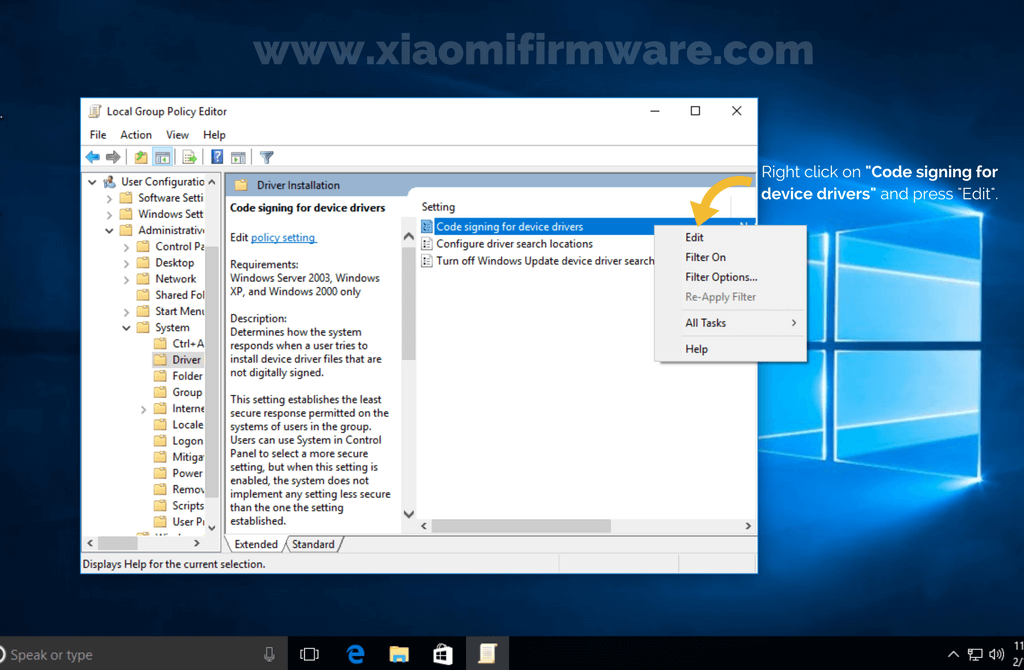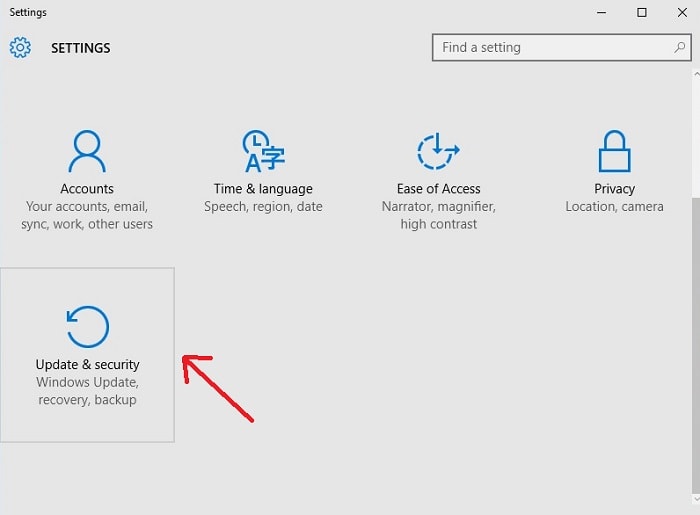
- #Allow installation of unsigned drivers windows 7 how to
- #Allow installation of unsigned drivers windows 7 install
- #Allow installation of unsigned drivers windows 7 driver
- #Allow installation of unsigned drivers windows 7 windows 10
- #Allow installation of unsigned drivers windows 7 code
#Allow installation of unsigned drivers windows 7 driver
Disable Driver Signature Enforcement Permanently with Command Prompt If you want to permanently disable driver signature enforcement, now you can follow the instructions below to do this job with ease.
#Allow installation of unsigned drivers windows 7 how to
How to Disable Driver Signature Enforcement Permanently
#Allow installation of unsigned drivers windows 7 install
Step 3: Close the Command Prompt window and restart your computer.Īfter you finish all the steps mentioned above, you can install any unsigned drivers without encountering problems. Step 2: Type the command: bcdedit /set testsigning on and then press Enter to run the command. Step 1: Type cmd in the Search bar, right-click Command Prompt and then choose Run as administrator to open it with administrator privileges.
#Allow installation of unsigned drivers windows 7 windows 10
Here is a quick guide on how to enable Windows 10 test signing mode with Command Prompt. In test mode, you will not meet any problems when installing unsigned drivers. If you don’t want to disable driver signing permanently, you can try to put Windows 10 in test mode and install any drivers you want.

Method 3: Enable Windows 10 Test Signing Mode Now you should disable driver signature enforcement successfully and you can install the unsigned drivers. Step 6: Restart your Windows 10 system in the end. Step 5: Click OK and then click Apply to perform all the changes. Step 4: Now check Enabled and then choose Ignore from the drop-down list under Options.
#Allow installation of unsigned drivers windows 7 code
Step 3: Right-click the Code signing for device drivers entry and then select Edit. Step 2: Once in the Local Group Policy Editor window, navigate to User Configuration > Administrative Templates > System > Driver Installation from the left panel. Next, type gpedit.msc in the Run box and press Enter to open Local Group Policy Editor. Step 1: Press the Windows key + R key at the same time to open the Run dialog box.

Here are the steps on how to disable the driver signing code with Local Group Policy Editor. Method 2: Disable Driver Signing Code with Local Group Policy EditorĪnother method you can try to disable driver signature enforcement temporarily is to use Local Group Policy Editor. Since this method only disables driver signature enforcement temporarily, so you need to install all the unsigned drivers as soon as you can. Now you are able to install unsigned drivers without error messages. Press F7 on your keyboard to choose Disable driver signature enforcement.Īfter finishing all the steps above, your PC will restart and you should disable driver signature enforcement successfully. Step 3: Click the Restart button to restart your computer one last time to modify boot time configuration settings. Step 2: Once the computer has rebooted, choose the Troubleshoot option when a new window pops up and then choose Advanced options > Startup Settings. Step 1: Click Restart from the Start menu and hold down the Shift key on your keyboard at the same time. Here is a quick guide on how to disable driver signature enforcement by changing the Startup Settings. After you restart your computer, the driver signature enforcement feature will automatically be enabled. This is the easiest way to disable driver signature enforcement on Windows 10, but you need to keep in mind that this method only temporarily disables driver signature. If you want to disable driver signature enforcement temporarily, follow the instructions below right now. How to Disable Driver Signature Enforcement Temporarily Keep reading and this post will show you how to disable it temporarily or permanently in multiple ways. Thus, if you want to install unsigned drivers and make sure they can work properly, you need to disable driver signature enforcement. If they don’t pay, their drivers will be inaccessible in Windows. In order to obtain a verified certificate, the manufacturer or developer must pay Microsoft. Many programs that use driver files don’t have digital signature authentication. However, sometimes you need to disable driver signature enforcement on Windows. Why Do You Need to Disable Driver Signature Enforcement While this feature is great, it can sometimes cause problems, such as installing drivers that are not digitally signed when no signed alternative is available. Unfortunately, installing drivers that aren't signed is much more difficult than installing apps that aren't signed. You can't just click "allow run" to do so. Instead, you need to disable driver signature enforcement to install the driver.

Driver signature enforcement is similar to signed applications the signature in the file confirms that the application being launched is both safe and approved by the developer and Microsoft. Two-level approval means that the manufacturer has released drivers for a specific system and operating system, and that it also carries a seal of approval from Microsoft. They are delivered through the operating system for users to find more easily and also distributed by Microsoft.


 0 kommentar(er)
0 kommentar(er)
